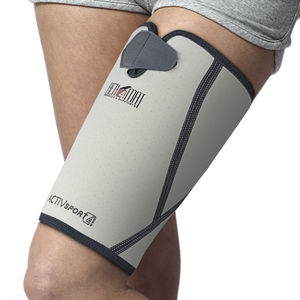
Knee orthosis RAPTOR/2RAknee ligament stabilizationLM
Add to favorites
Compare this product
Characteristics
- Type
- knee orthosis
- Application
- knee ligament stabilization
- Size
- L, M, S, XL
- Options
- articulated
Description
POSTERIOR CRUCIATE LIGAMENT INJURY (PCL)
Posterior Cruciate Ligament (PCL) is strong, elastic bands of tissue, connecting tibia and femur. It’s more stronger than anterior cruciate ligament (ACL). PCL prevents the femur from sliding off the anterior edge of the tibia and to prevent the tibia from displacing posterior to the femur. Together with ACL forms knee joint.
Cruciate ligaments of knee allow us to live in active way. They support such physical activities as: jumping, swimming or running. Unfortunately, together with surrounding soft tissues, they may be damaged easily during daily activities. Very often, together with PCL, other ligaments and meniscus are torn.
The posterior cruciate ligament (PCL) is susceptible to injury during hyperflexion, hyperextension and in a mechanism known as a dashboard injury. PCL lies deep within the knee joint and due to this fact, high forces may torn it such as car accidents, which are 50% of total amount of isolated injury to the PCL. In this injury the knee experiences impact in a posterior direction during knee flexion toward the space above the tibia.
Furthermore, PCL injury is common in many sport disciplines. During sports activities, the PCL also can tear when an athlete falls forward and lands hard on a bent knee, which is common in football, basketball, soccer and especially rugby. Every sudden motion of knee twisting or jumping can result in ligament injury.
Catalogs
No catalogs are available for this product.
See all of Reh4Mat‘s catalogsRelated Searches
- Orthopedic immobilization
- L orthopedic immobilization
- S orthopedic immobilization
- M orthopedic immobilization
- XL orthopedic immobilization
- Support belt
- Adult support belt
- Articulated orthopedic immobilization
- XXL orthopedic immobilization
- Knee orthosis
- M support belt
- L support belt
- S support belt
- XL support belt
- Semi-rigid support belt
- Open knee orthopedic immobilization
- XXL support belt
- Forearm support
- Lumbar support belt
- AFO
*Prices are pre-tax. They exclude delivery charges and customs duties and do not include additional charges for installation or activation options. Prices are indicative only and may vary by country, with changes to the cost of raw materials and exchange rates.

















